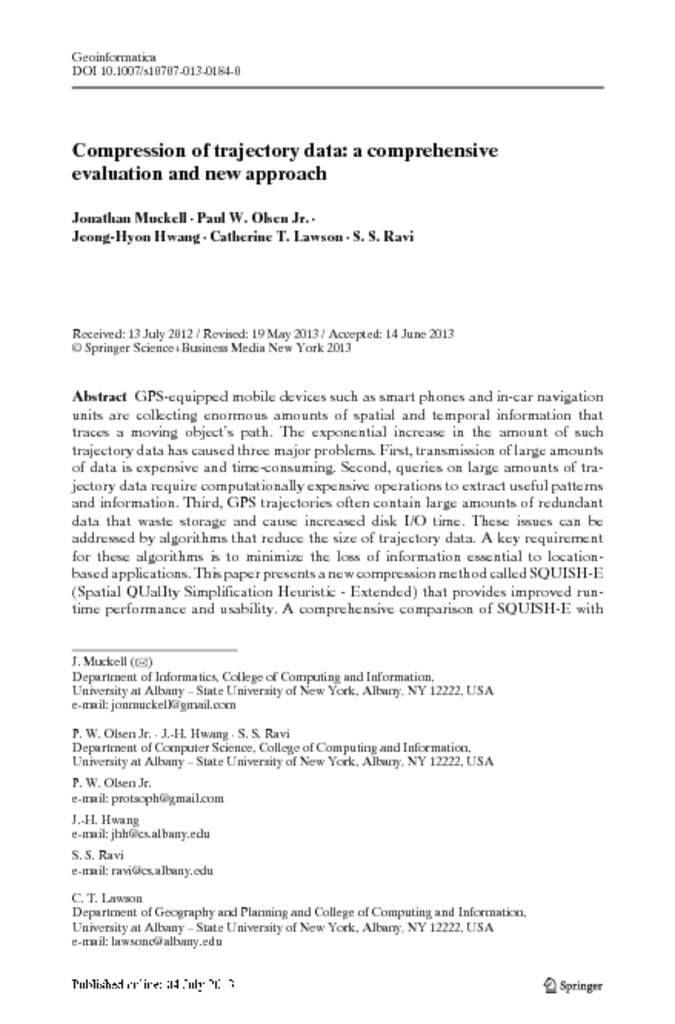GPS-equipped mobile devices such as smart phones and in-car navigation units are collecting enormous amounts of spatial and temporal information that traces a moving object’s path. The exponential increase in the amount of such trajectory data has caused three major problems. First, transmission of large amounts of data is expensive and time-consuming. Second, queries on large amounts of trajectory data require computationally expensive operations to extract useful patterns and information. Third, GPS trajectories often contain large amounts of redundant data that waste storage and cause increased disk I/O time. These issues can be addressed by algorithms that reduce the size of trajectory data. A key requirement for these algorithms is to minimize the loss of information essential to location-based applications. This paper presents a new compression method called SQUISH-E (Spatial QUalIty Simplification Heuristic - Extended) that provides improved run-time performance and usability. A comprehensive comparison of SQUISH-E with other algorithms is carried out through an empirical study across three types of real-world datasets and a variety of error metrics.




